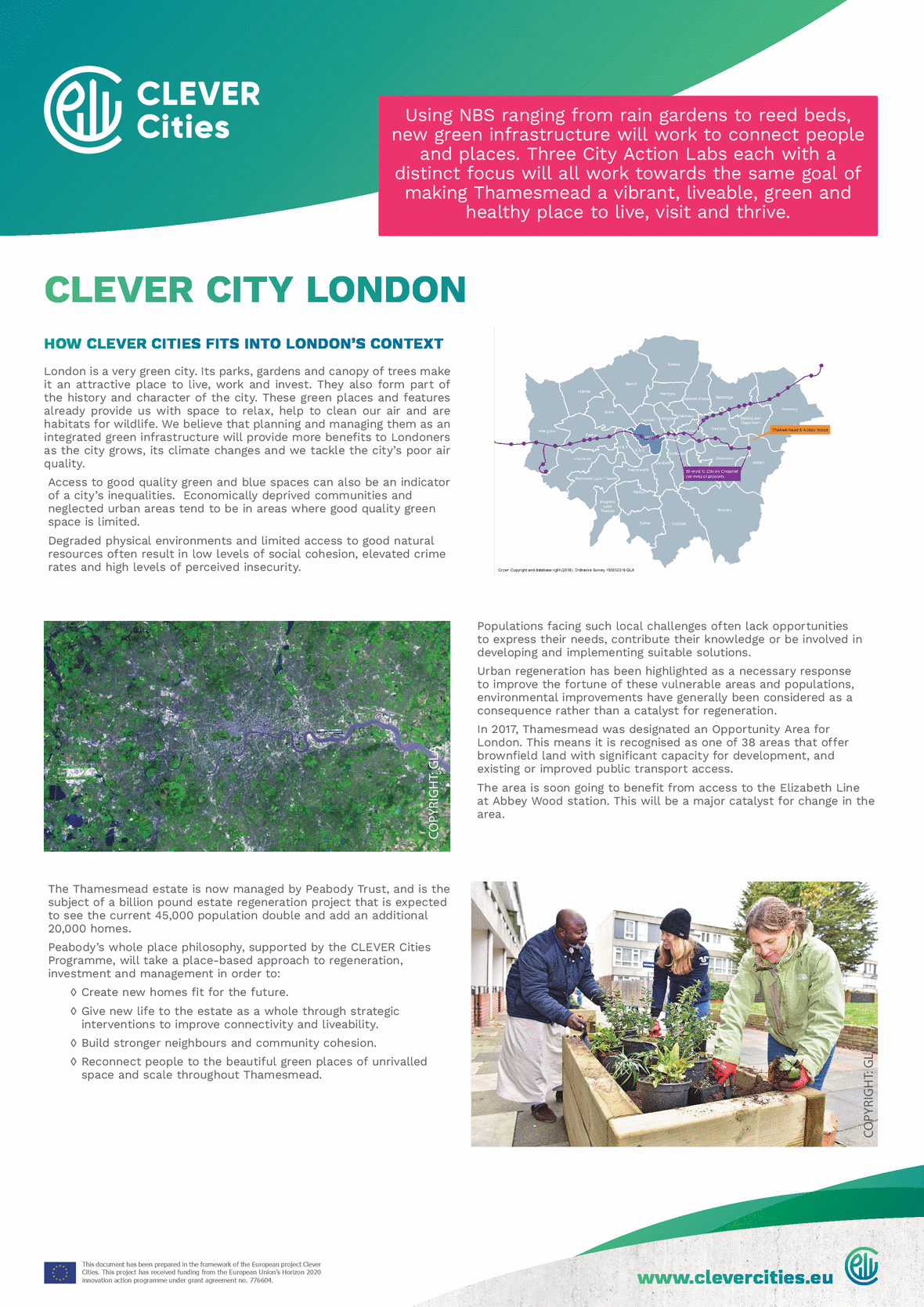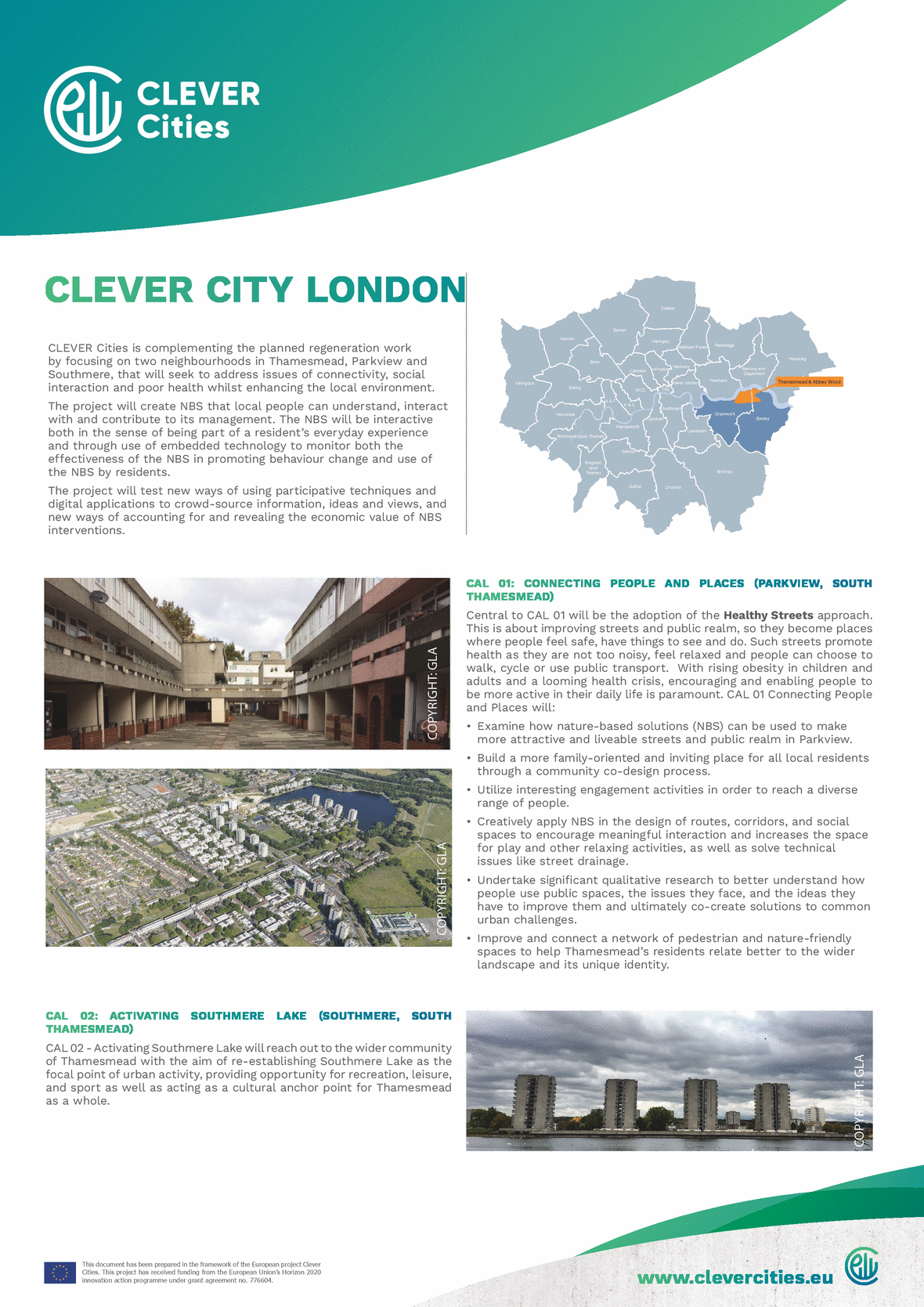London, United Kingdom
Population: 8.7 Million
The largest city in western Europe and the UK’s capital, London is a global leader in various sectors from the arts and entertainment industries to education and finance. It is also a very green city, with an extensive network of parks, green space, rivers and open water. Over the centuries, London has attracted people from all over the world, making it one of the most culturally diverse cities in the world.
London’s CLEVER Action Lab: Thamesmead
Located 15km from the City Centre, Thamesmead is in south-east London on the south bank of the river Thames.
The history
Thamesmead is a neighbourhood, with a unique history and an existing community of over 45,000 people. It has a vibrant and multi-cultural population and has seen significant change in demographics in the last thirty years. Thamesmead, once a predominately white working class new town, now has 63% of its residents from black and minority ethnic groups, compared to the London average of 55%. The population in Thamesmead is expected to double in the next 50 years with new housing being built and improved transport connections underway. There is a recognition that this growth will bring further demographic changes and social integration challenges.
The architecture
Thamesmead is an architecturally iconic public-housing estate, designed and built by the Greater London Council in the 1960’s. It was conceived to address the post war housing crisis and tackle some of the problems associated with tenement living. It had an ambitious plan to be a utopia of affordable housing with green spaces and lakes for residents to enjoy. As the estate is situated on the Thames floodplain, these open spaces were also designed to hold flood water in the event of extensive tidal flooding, which prior to the introduction of the Thames Barrier in 1984 was a significant risk. In many ways the estate is an early example of nature-based solutions in use.
The first swath of development created concrete towers and low-rise homes, elevated from the ground to protect from flooding, and connected by walkways and terraces to encourage mobility and community interaction. Other parts of Thamesmead, built in the 1970s and 1980s, moved away from this model and focused on building more typical suburban street layout of cul-de-sacs.
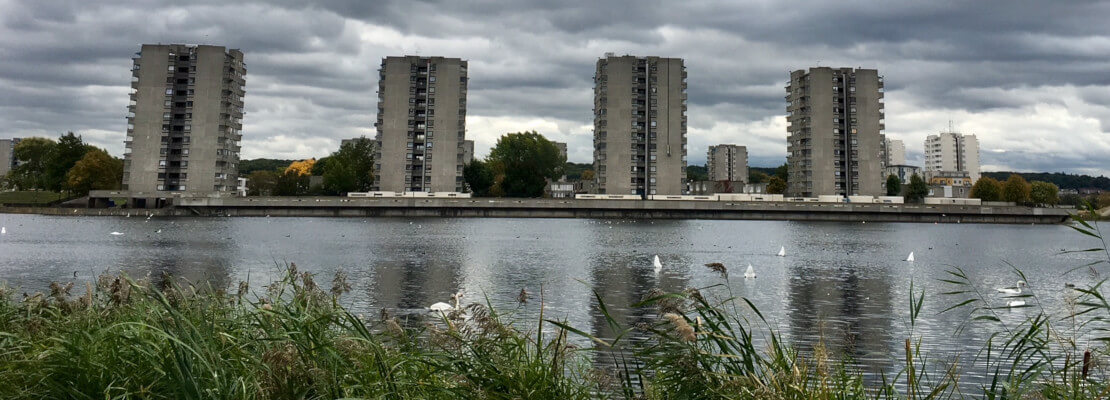
The challenges
Sadly, through poor design many of the interventions did not work well for the residents and resulted in many unintended consequences. Coupled by lack of sufficient investment by previous estate management companies, most of the estate has declined over the years and is in much need of regeneration and reimagining. The layout of the estate is confusing, resulting in poor legibility and often a sense of isolation. Communal terraces have been sub-divided by residents to create defensible spaces. The elevated walkways are poorly lit and considered unsafe places to walk. Underpasses and garages have become places for anti-social behavior. Lakes and greenspaces are underused due to poor access routes and orientation. The green spaces are inactive and provide limited amenity value to many residents.
The iconic imagery of the concrete Thamesmead high-rises has provided the location for various films ranging from ‘A Clockwork Orange’ to ‘Beautiful Thing’. However, by using the Thamesmead estate as a brutalist setting these films have contributed to the idea that Thamesmead is a failed estate. This functional landscape needs to be reimagined and reactivated to restore and reinforce some of these previous design ideas and ambitions.
The opportunities
Peabody, London’s most established social landlord, has been responsible for the whole estate since 2014, and has embarked on a long-term £1.5 billion programme of investment; consequently, Thamesmead is not only the biggest regeneration projects in London but one of the biggest in the UK. Peabody know that the quality of a place is hugely important, and that happiness and health is intimately related to the places where people live and work, and a poor-quality environment has a huge impact on people’s lives. They recognise the value of using nature-based solutions to create quality great places where people want to live and thrive.
Thamesmead Action Lab
CLEVER Cities provides a unique opportunity, through the creation of Thamesmead Action Labs, to reveal the potential and value of the green spaces and natural assets of the area. The Action Labs are based in the neighbourhoods of South Thamesmead, specifically Southmere and Parkview, each with a distinct look and feel and a variety of attributes and challenges.
In each of the Action Labs, Peabody are implementing a series of nature-based solutions; ranging from ‘nature-based solutions on the doorstep’ with raingardens in courtyards and swales along walking routes, to the installation of a wetland project to turn an unsightly polluted lake, into a place for leisure and recreation.
CLEVER Cities interventions
CLEVER Cities will be enhancing and adding value by leading the co-design process to shape and design current and future nature-based solutions and work with schools and community networks to co-create solutions to help people better connect with nature and be more active in their daily lives.
CLEVER Cities will also support the evaluation of nature-based solutions to fully understand the social, economic impact of the solutions, in addition to the environmental outcomes.
Aims
Through CLEVER Cities, the Action Labs in Thamesmead intends to:
- provide more opportunities for the residents to connect with, and learn about their natural landscapes;
- use nature-based solutions as a means to upskill and improve economic opportunities for residents of Thamesmead;
- develop and implement new ways of community engagement, built on the principles of co-design;
- demonstrate that nature-based solutions can contribute to improving wellbeing for citizens;
- progress the research on valuing the benefits of nature-based solutions in urban regeneration projects; and
- contribute to the evidence base that supports the business case for more nature-based solutions in future regeneration and development projects.
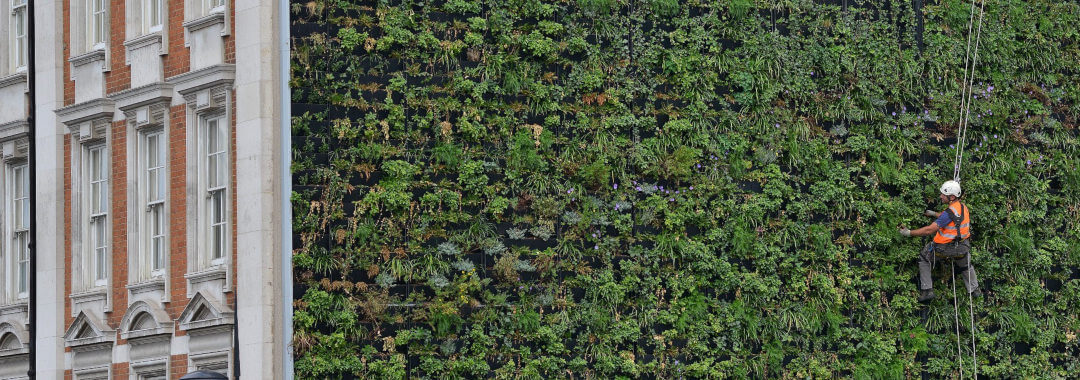
Latest news from London
Making Space for Nature June Activities
7 August 2023
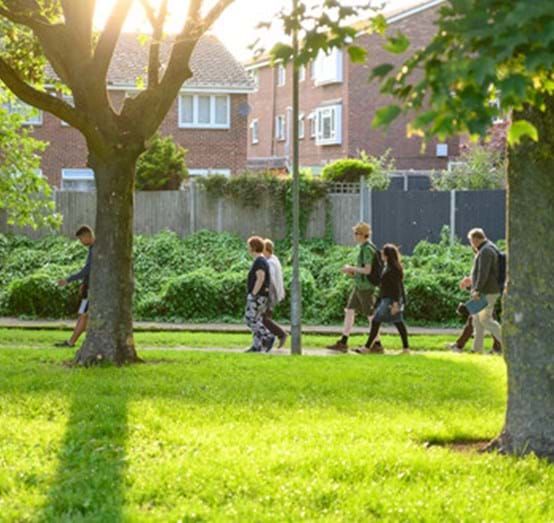
CLEVER Cities London team has implemented the Making Space for Nature (MSFN) programme in Thamesmead since 2018 to improve green spaces and to test the benefits of NbS, which are co-created with local communities. For the last five years, hundreds of events have been organised in cooperation with local residents and groups to make Thamesmead a greener and happier place. The MSFN programme in June has been full of outdoor activities with guided nature walks by local artists, community gardening, biodiversity volunteering, and creative writing workshops.
CLEVER Cities London Tackles Mental Health
2 November 2022
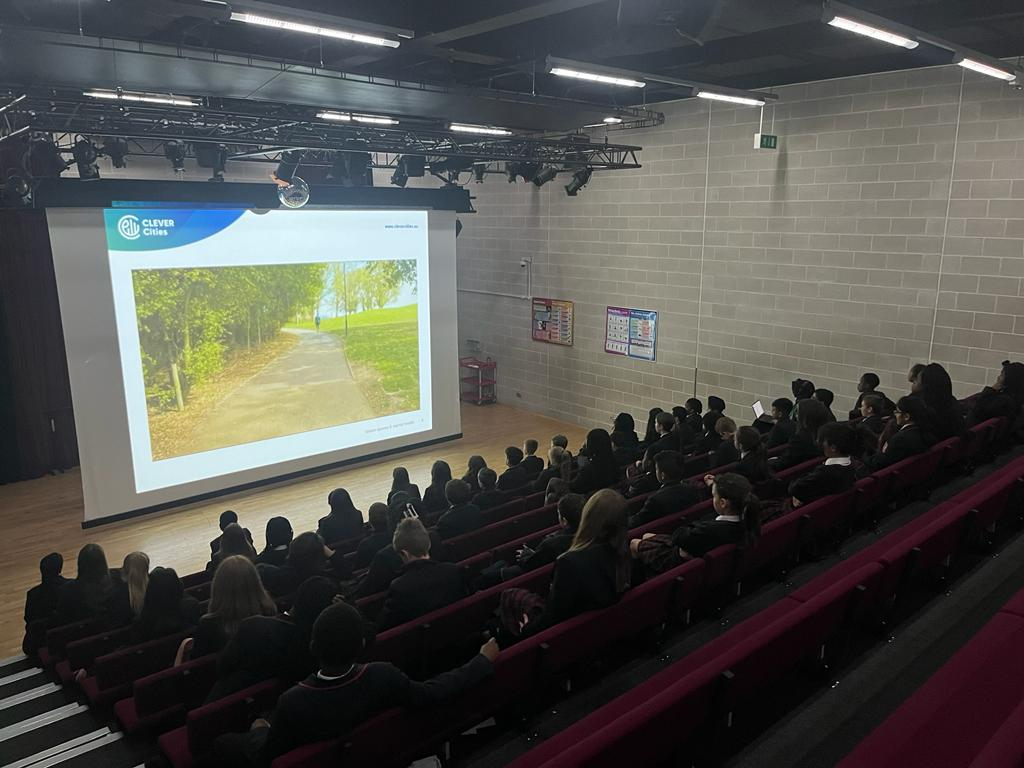
This October, the CLEVER London focused their efforts on raising awareness for Mental Health among students at a local South Thamesmead school: the Harris Garrard Academy. 240 students participated in a discussion on the relationship between green spaces and mental health. Local CLEVER Cities interventions such as the Edible Garden and Tiny Forest were front and center. Students learned how these projects have improved the quality of green spaces in Thamesmead and encouraged local residents to become more active and spend more time outside–behaviors that support mental and physical health.
CLEVER Cities London Case Study: Ozge Aden Makes Space for Nature
19 September 2022
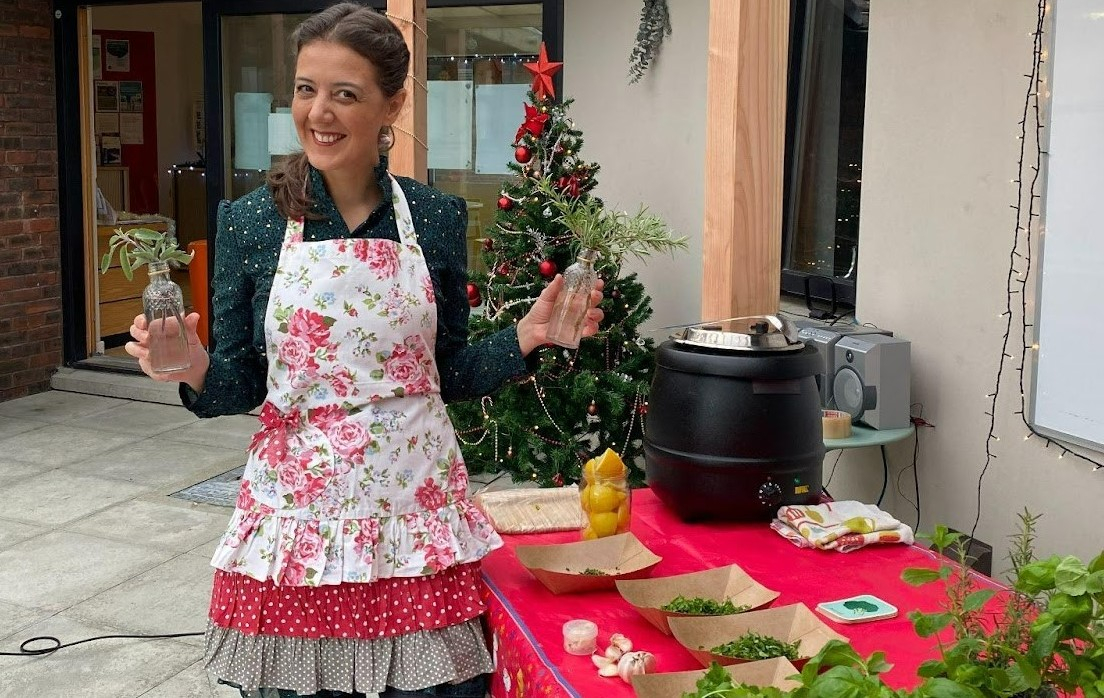
Ozge Aden is a member of the Thamesmead community and successful recipient of the CLEVER Cities sponsored Making Space For Nature (MSFN) Community Fund last year. The grant programme helped Ozge to realise her idea: to combine education on eating healthily with growing food from seeds and cooking from scratch. Having worked for the National Health Service as a community healthy eating teacher previously, Ozge’s knowledge and experience of running sessions for people from different backgrounds have been valuable in helping individuals and families to eat well and stay healthy.
CLEVER London Surveys Local Ecology
5 September 2022
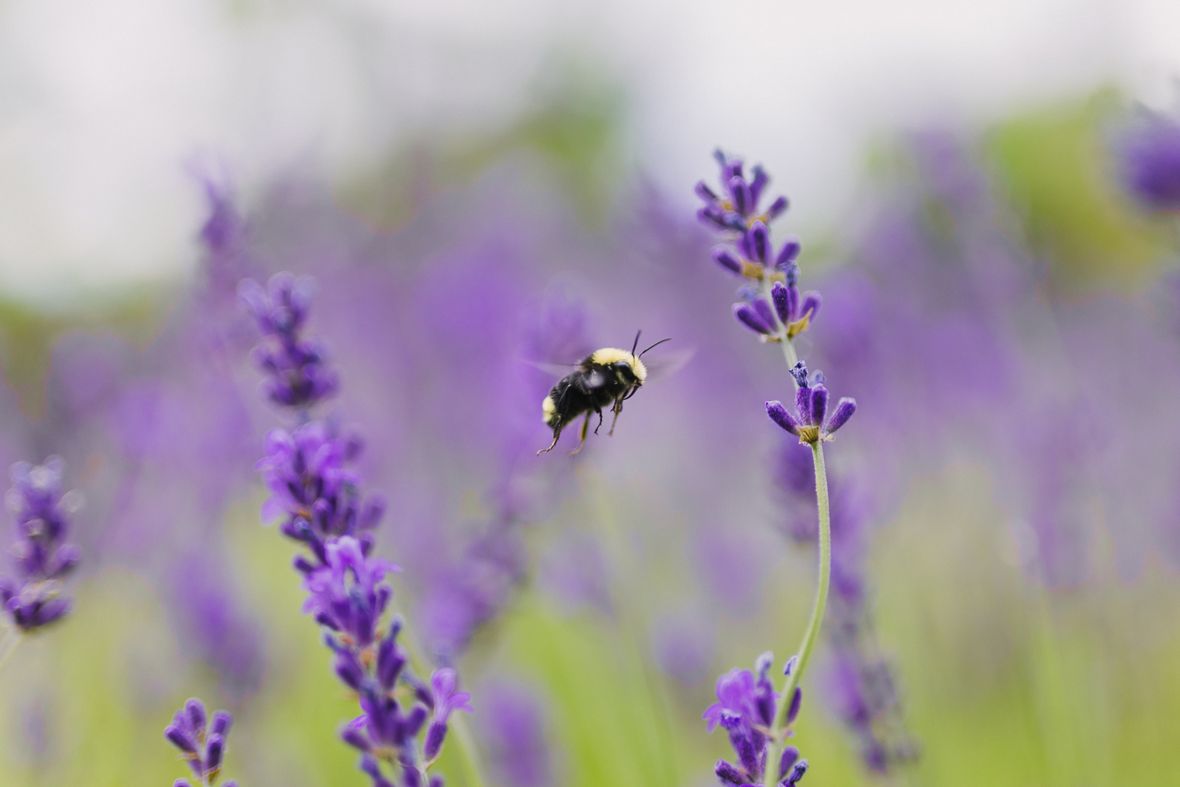
CLEVER Cities London spent multiple days in July and August working with local residents to monitor the local flora and fauna in the Thamesmead CC Project area. Members of the public were invited to join experts in spotting, identifying, and recording sightings of birds, bumblebees, butterflies and bats–important pollinators and seed distributors. The biggest highlight of the day was finding a shrill carder bee (Bombus sylvarum), in a wildflower hedge next to Southmere Square. The Shrill Carder Bee, an avid forager of plants in the mint (Lamiaceae) and pea (Fabaceae) families, is one of the rarest bumblebees in the UK, and is also threatened by climate change and habitat loss.
Thamesmead gets a Tiny Forest!
23 June 2022

Scores of Thamesmead residents came together to plant South London’s first ever Tiny Forest in Southmere Park on Saturday 19 February, thanks to a partnership between Peabody, environmental charity Earthwatch Europe – who are pioneering Tiny Forest in the UK – the Greater London Authority, CLEVER Cities and BlackRock.
Unveiling of new edible garden in South Thamesmead reinvigorates local community’s interest in a greener future
26 July 2021

With the help of input and design ideas from local residents, CLEVER City London, alongside Peabody and its appointed design partner, muf architecture/art, has successfully delivered its first nature-based solution: an edible garden in South Thamesmead.
To celebrate, the CLEVER Cities team organised a community gathering on July 3rd to introduce locals to the garden and to receive feedback on the initiative.
London’s new Urban Innovation Partnership launches
31 May 2021
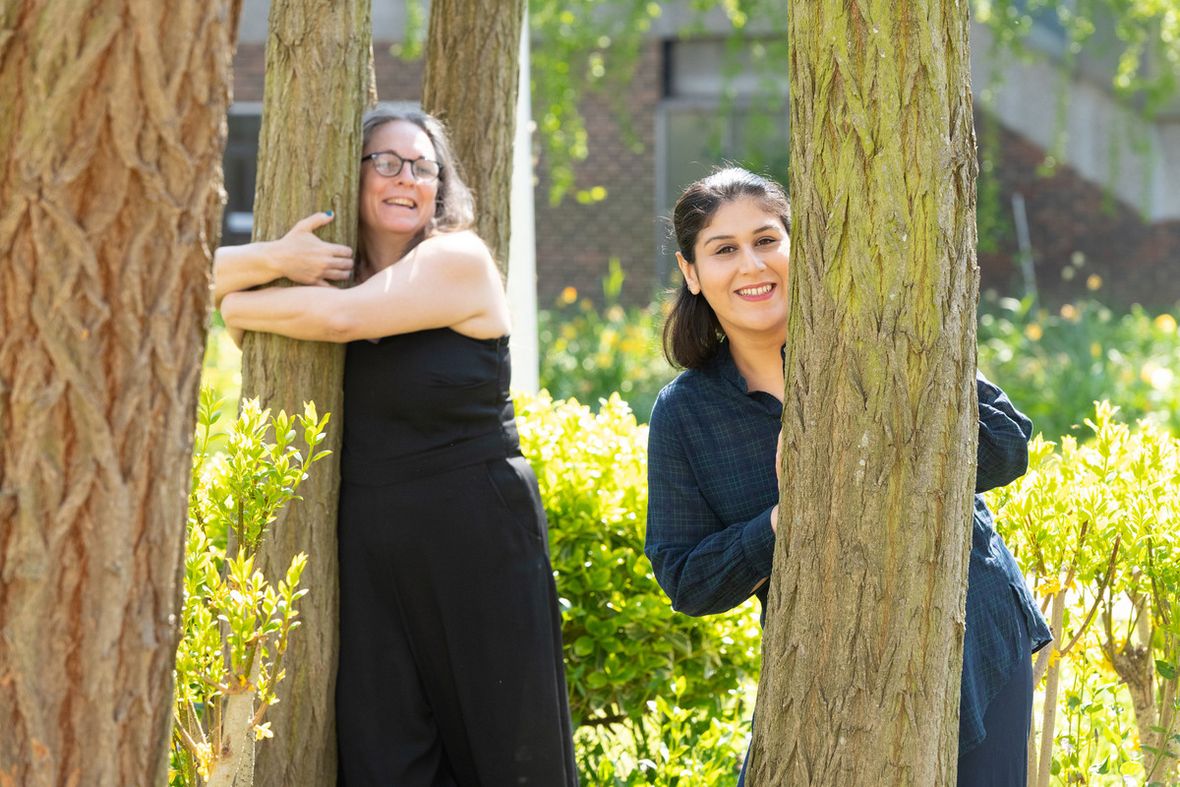
Residents in South Thamesmead are having a say in how their neighbourhoods will look and change in the years ahead. The CLEVER Cities team in London have embarked on a new and innovative way of working with local stakeholders.
The self-titled South Thamesmead Garden Estate Community Design Collective has been officially launched with the group, including 10 local residents committed to helping make Thamesmead greener, meeting for the first time via Zoom.
New report: Exploring the potential of an NBS-centric non-potable water network for Thamesmead
25 May 2021

Water stress is a rising challenge for the Greater London area as the gap between supply and demand widens. Rising water demand, ageing infrastructure and the increased likelihood of droughts and storm surges due to climate change are increasingly compromising Greater London’s water security.
To improve the overall resilience of the city's water system, the Greater London Authority (GLA) wanted to investigate whether a non-potable water network that integrates a nature-based solutions approach would be a realistic project to implement in Thamesmead, London's CLEVER Action Lab.
New fund to boost green spaces in Thamesmead, London
3 May 2021

A new grants scheme to help transform green spaces in Thamesmead, London’s CLEVER Action Lab, has been launched while the town’s Community Fund has just awarded more than £20,000 locally, taking the total to more than £80,000 and over 50 projects supported.
Amounts from £200 up to £2,000 will be awarded by the new Making Space for Nature Community Fund to individuals, community groups, charities and schools to help develop Thamesmead’s green areas and encourage local people to engage with nature.
#GetSetSow campaign turns Thamesmead residents into gardeners during lockdown
9 October 2020
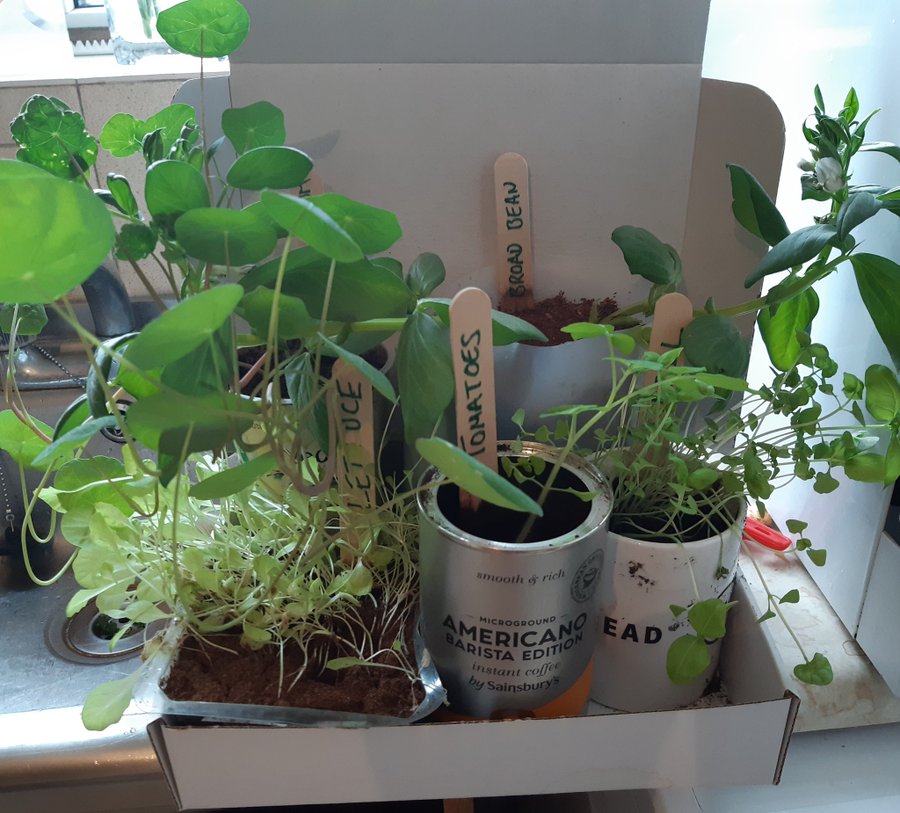
With six major lakes, three nature reserves and over 350 acres of open space, Thamesmead in south-east London is marked by a unique natural landscape which locals regularly enjoy. But how could residents keep in touch with nature amidst the strict lockdown imposed during the COVID-19 pandemic? The CLEVER Cities team in London came up with a simple but smart solution: to help people bring nature indoors and become more self-sufficient by growing food at home.
In June, CLEVER Cities partner Groundwork London led a campaign, supported by Peabody and Greater London Authority, to give away 350 free food growing kits to Thamesmead residents, including seeds for lettuce, tomatoes, broad beans, basil and an instruction booklet as part of the initiative #GetSetSow.
London gives away food growing kits to inspire greater connection to nature in Thamesmead
5 June 2020

To celebrate Growing for Wellbeing week (June 1-7), Making Space for Nature – a green initiative led by CLEVER Cities partners Peabody, Groundwork London and the Mayor of London are giving away free food growing kits to Thamesmead residents. The kits will make it easier and more accessible to grow food at home – providing a rewarding activity during lockdown, inspiring a greater connection to nature, helping to save money and improve wellbeing.
The small kits include seeds for lettuce, tomatoes, beans and herbs and has been designed so that residents can grow produce no matter how big or small their outdoor space is - whether it’s a windowsill, balcony or garden.
Thamesmead – the future ‘Garden of London’
8 April 2020

CLEVER Cities is all about harnessing the potential of local communities to bring nature back into urban spaces and our everyday lives. But how are the front-runner cities making this happen on the ground?
In London, CLEVER Cities partners, the Greater London Authority, Peabody and Groundwork London, have hired Gardener in Residence, Kat Wojnar, to help create and maintain high-quality green spaces for the locals of Thamesmead to enjoy. Kat told us about her new role, and as it turns out, she does a lot more than just gardening.
Making space for nature in Thamesmead
10 October 2019
On the sunny afternoon of 22 September 2019, residents of Maran Way (part of a CLEVER Cities Action Lab) in Thamesmead, London, celebrated ‘Car-free Sunday’ by taking over some parking spaces and using them for a community gathering. The event attracted people of all ages and involved creative, fun and inspiring activities. It was organised within the ‘Making Space for Nature’ campaign - part of the international CLEVER Cities project- which aims to connect Thamesmead residents with the nature in their area and encourage them to participate in the project.
Thamesmead is set to finally live up to its aspirational beginnings
12 June 2019
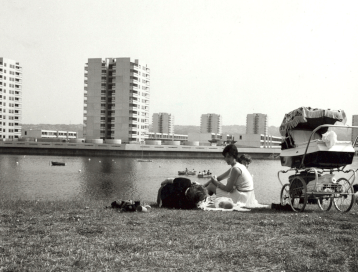
The Thamesmead Estate, in south east London, was intended to be a model city, with utopian architecture and a vast network of green spaces and waterways that took advantage of its location on the banks of the river Thames. Originally, the town was settled by families escaping from cramped and unfit housing in central London, and is now home to 45,000 residents.
The layout of the estate is confusing and often isolating. Elevated walkways are poorly lit and considered unsafe places to walk. The many green and blue spaces today are inactive and provide limited amenity value to many residents. However, that is all about to change.
Top marks for green cities
22 February 2019

How the CLEVER Cities team can tell whether our nature-based interventions are working
It is common knowledge that living near nature makes you healthier and happier. But is it possible to actually measure this? How can decision-makers make the case for investing in nature-based interventions?
The CLEVER Cities project team is working on coming up with a way to do exactly that through a combination of hard science, citizen science and flexibility. The CLEVER Monitor is designed to be robust enough to provide concrete data on the performance of the nature-based solutions, and is also adaptable enough to account for our learning over time and the differences between cities.
Co-creation - the CLEVER Cities way
14 February 2019
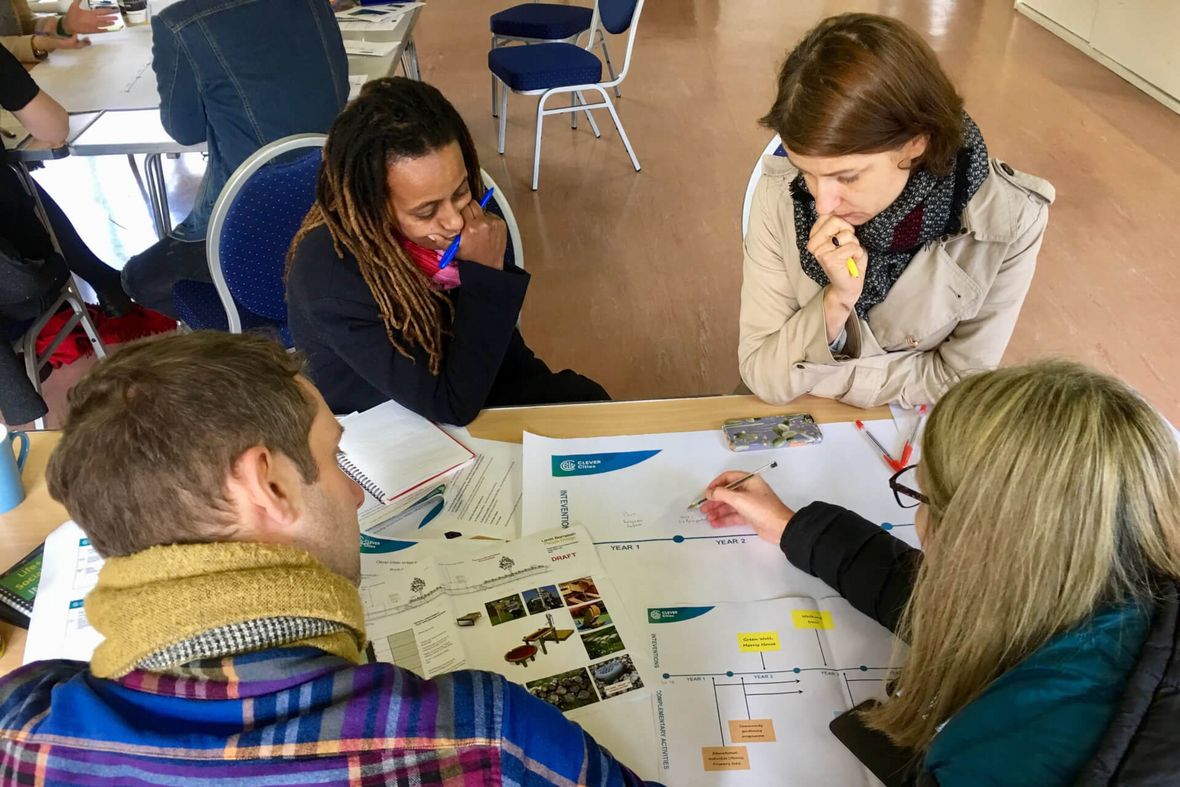
Between October and December 2018 the three front-runner cities of Hamburg, London and Milan took the first steps towards co-creating their CLEVER Cities Action Labs - the specific areas of these cities targeted for green regeneration within the CLEVER Cities project.
Inclusive urban development
But what does co-creation really mean? For the CLEVER Cities project it’s about opening local urban development to non-governmental organisations, foundations, civil society, research institutions and local citizens and businesses, ensuring all jointly design, implement, monitor and ultimately own the project.





